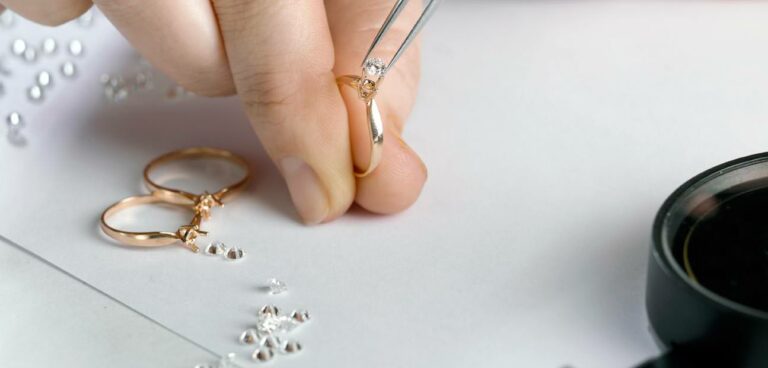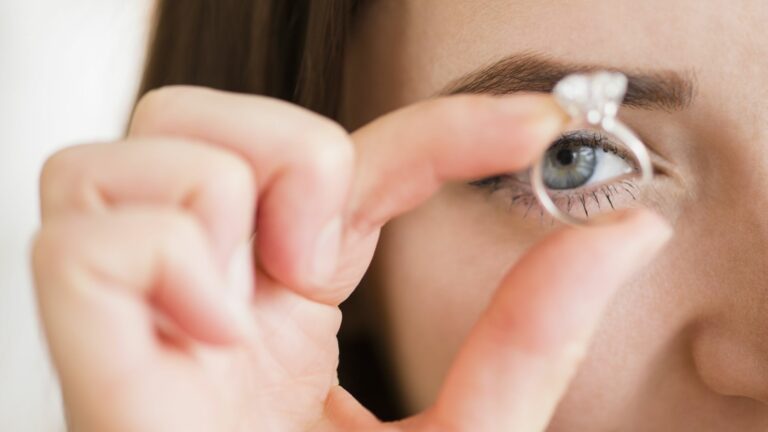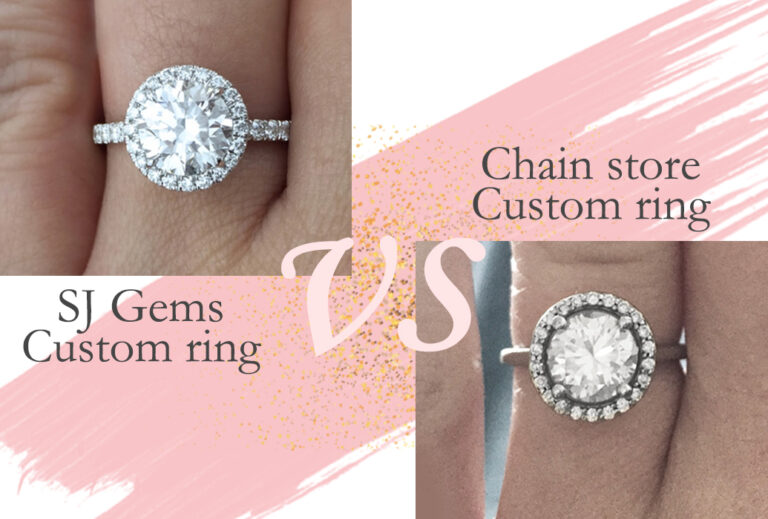The Price of a 1ct Diamond Ring
Did you know that diamonds have a ‘book’ value? The price of a 1ct diamond ring is connected to an international value report. In this post, we will share some of the Secrets that jewellers don’t want you to know.
How a diamond’s value is determined
We have all heard about the 4C’s, but what does it mean from a buyer’s perspective? Firstly, you should insist on a certified stone and we will dig into that later. Let’s look at the terminologies that will get thrown at you by salespeople. We will give you some tips that will keep them on their toes and, more importantly, make you look like you are not to be swindled easily.

As we mentioned earlier, diamond prices are based on an international register called The Rapaport. People in the industry refer to this as ‘rap’ and all transactions and dealings rely on this. Unfortunately, the general public rarely has access to this. The same goes for the motor industry that use the M&M bible to determine your car’s value.
Unlike cars that have a CODE as reference, the Rappaport requires several inputs and some basic math! Let’s start with the first metric that you will need to use to find your place on the pricelist:
Size Fraction
The report has several different columns that separate different size brackets. You will notice the price of diamonds increase significantly when you jump over the “big five”. Now that you have found your place on the sheet, lets narrow it down further
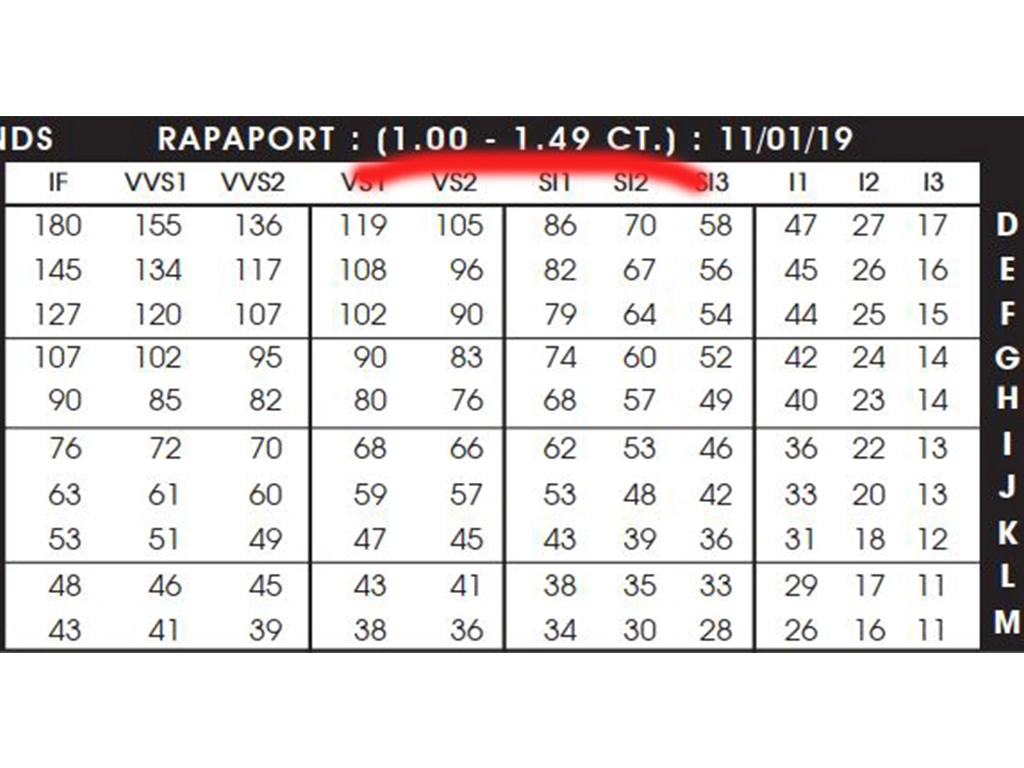
Clarity
There are 11 different clarity grades. From your prospective diamond, find the grade as stated on your quote or report.
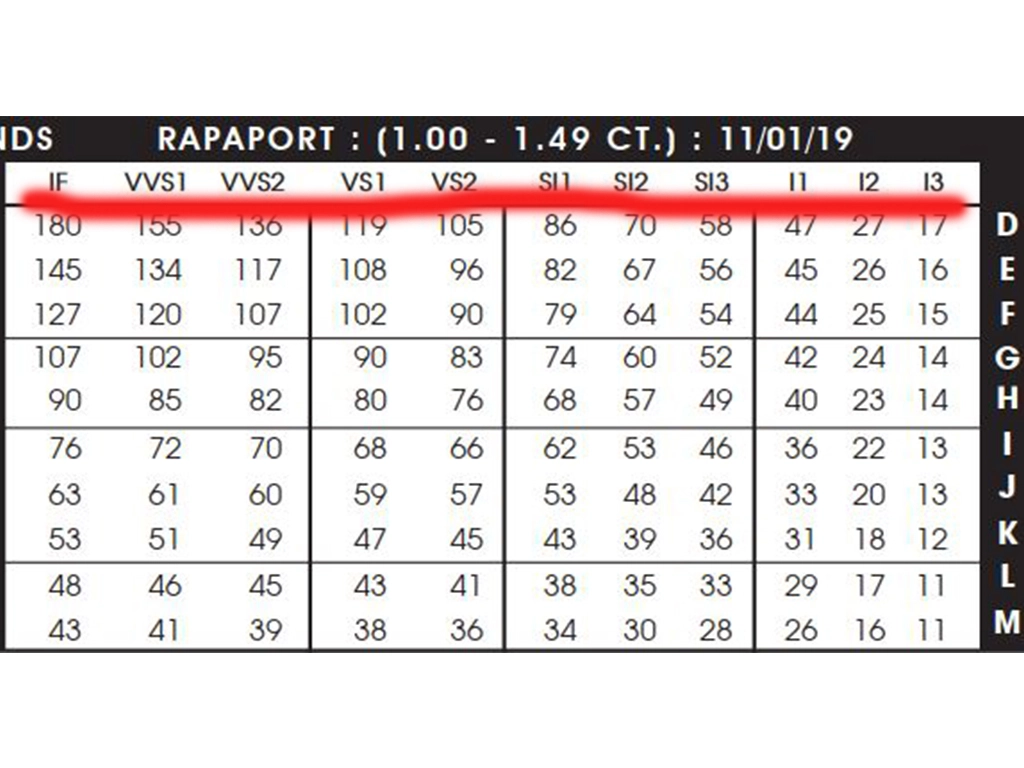
Colour
D to M are all the shades from colourless (D) to yellowish (M). There are different reports If your diamond is a fancy colour, like yellow or pink. One important thing to remember is that a low yellow colour (low cape) is not considered a fancy colour. They should cost a lot less, so it is stipulated on the certificate.
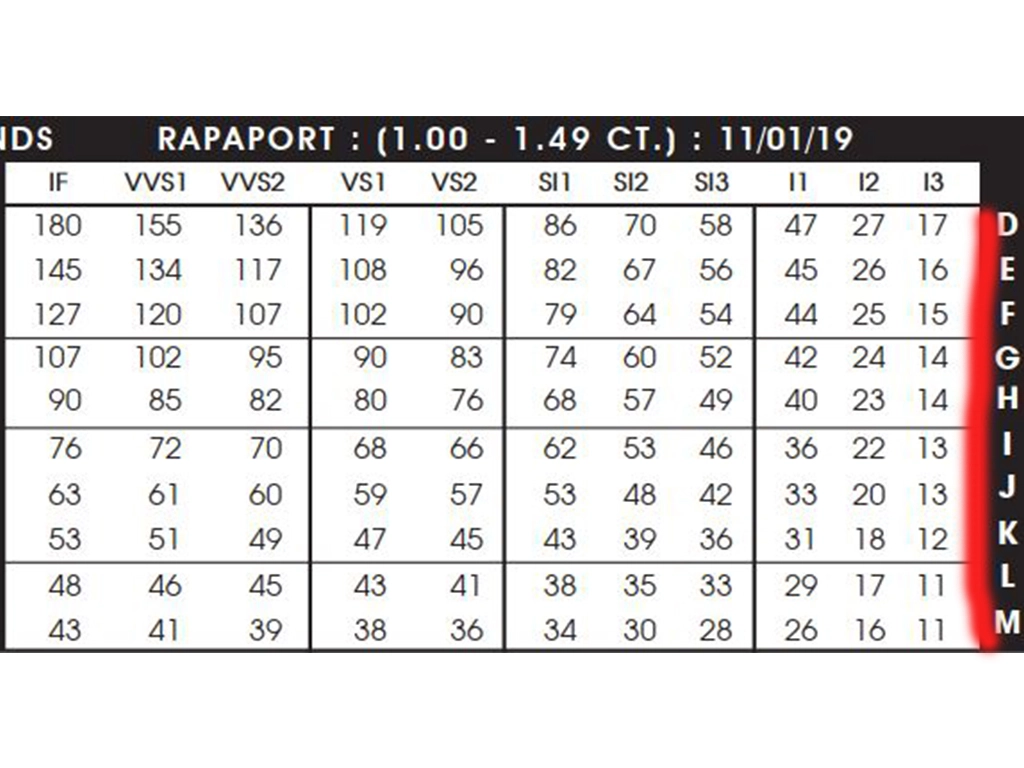
So, after all this, you are stuck with some crazy number! That is your price per carat times 100 dollars. Here is where a little bit of math comes in. Let’s say your stone weighs 1.05ct and the rap is 65. That gives you (1.05×65) x 100 x Exchange rate. Viola! You have your suggested retail price.
There are still other factors that come in to play, like symmetry, polish etc. You can think of it as what condition your used car is in and how many extras does it have. Realistically, if you need to pay R100,000.00 for a diamond that has a rap of R65,000.00, you know that you are being duped!
Armed with your new knowledge, you will be better prepared. The price of a 1ct diamond ring is going to set you back quite a buck, so let’s investigate further what you can do to better spend your money.
Which Grade do I need?
So, here is more lingo which will make more sense out of your future investment. The general clarity terms made famous by The Gemmological Institute of America (GIA) are:

Well this all looks very simple, but how does this work in real life? The sad answer is that here is where most people get ripped off. It also goes much deeper with retailers and dealers blaming the grading institution when they get caught out. I would like to show you an example of two diamonds that are both graded H colour SI clarity by the GIA:
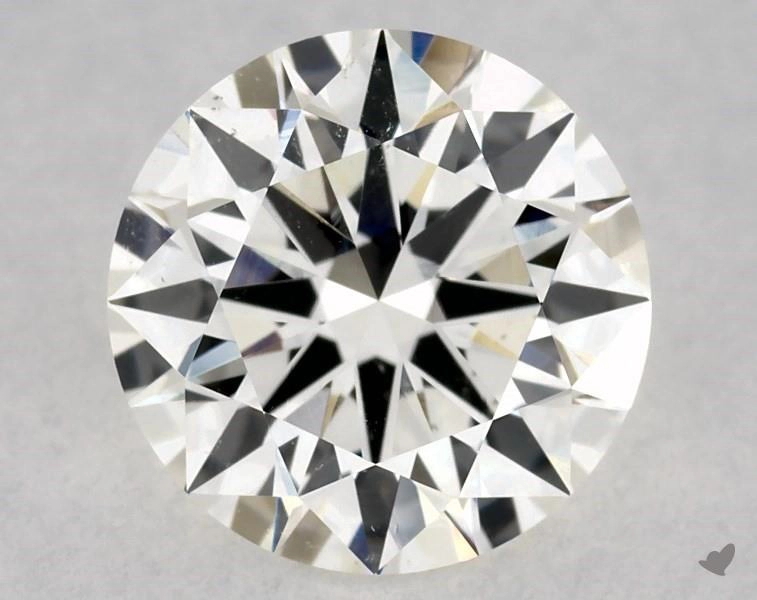
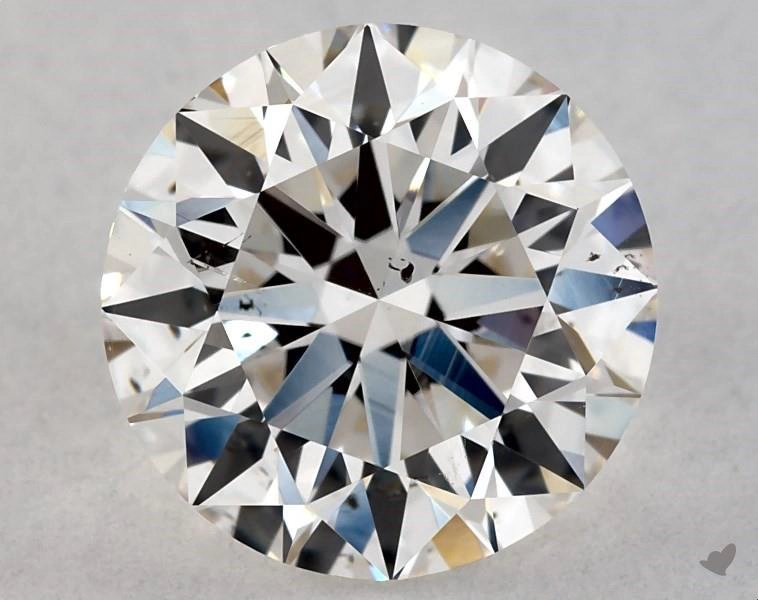
Can you see the difference? So, how do you make sure you get a better deal? According to the rap we learned about earlier, these two diamonds will have the exact same price, however, if you want to beat the system, Inclusion Types are what you need to look for. Don’t stress, I will give you some easy tips. Firstly, familiarise yourself with a grading certificate.
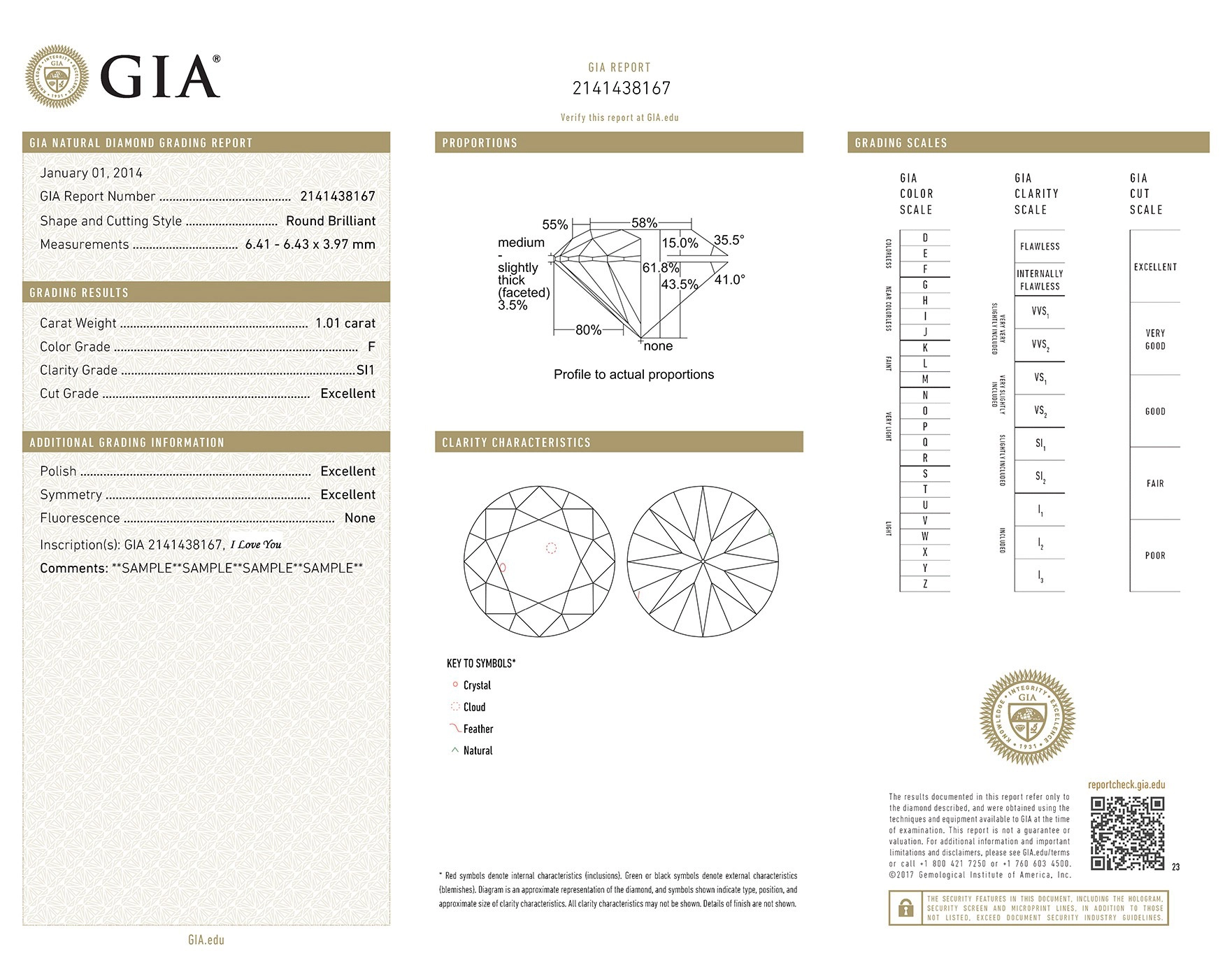
Note the type of inclusions. They will elaborate on the type in the ‘comments’ section of the report. In general, there are 3 characteristics of diamond flaws I would avoid:
- Negatively impacts brilliance or causes hazy appearance
- Easily visible to the naked eye
- Cause structural or durability issues
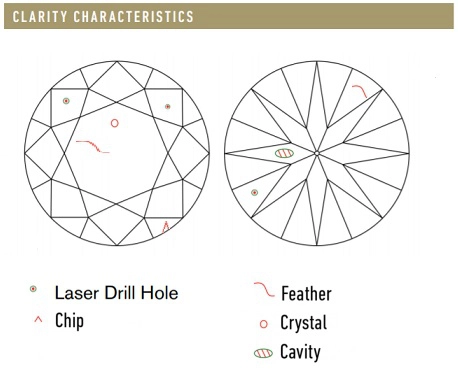
A chip is defined as a shallow opening on the surface of the diamond and is often caused by an impact on a facet junction, girdle edge or culet. This is one of the worst inclusions to have in a diamond as a chip can weaken the stone’s structural integrity. Stay clear of these, as they will cost you in the long run.
A laser-drilled hole is a tell-tale sign that the diamond has been artificially enhanced to improve the appearance of the inclusion. This is done by drilling a tunnel from the surface of the diamond to reach an embedded crystal inclusion. Very often, laser drilled diamonds are further treated with an acid bath or injected with a filler material to mask the inclusion.
When the following comment “Clarity grade based on cloud/graining not shown” is found in the grading report of a lower clarity grade diamond (SI or lower), this is an immediate red flag you need to beware of. This will impact on the diamond’s sparkle effect and make it appear dull and cloudy.
Don’t get too hung up on the type of inclusions. Many people make the mistake of paying a lot of extra money for a higher grade, because they are uninformed and scared. I promise you, with an untrained eye, you will NOT be able to see the difference between VVS2 and SI1. As long as the stone looks clean 30cm away from the naked eye.
Rather spend more on a better colour. If you would like to go more in-depth, I found this video informative for the beginner:
Negotiate the price of a 1ct diamond ring?
It’s not easy spending your hard-earned money. In most cases, you will be a man spending a fortune on nothing more than bragging rights. Think of the time you bought your car. Did you pressure the salesman to sweeten the deal? Off course!
Follow this trail with me: The diamond dealer buys from the manufacturer/importer using Rap as a guide. The jeweller then buys from the dealer using Rap as a guide. See where I am going with this? If you want to get a decent price on a 1ct diamond engagement ring, Retailers and Chain stores are not your answer. Their jewellery is all mass-produced and has fixed retail prices.
Manufacturing jewellers are a way better option. You will get a chance to speak to the actual owner about your diamond purchase and be able to negotiate different options. This will also provide the opportunity to have the ring custom made for you, ensuring that you have something unique to offer that special person.
If you don’t have a lot of time to design a ring, we have a great online designer that you can use. It makes it easy to experiment with different shapes and metal colours. The tool is 100% free to use and gives you a design without confusion.
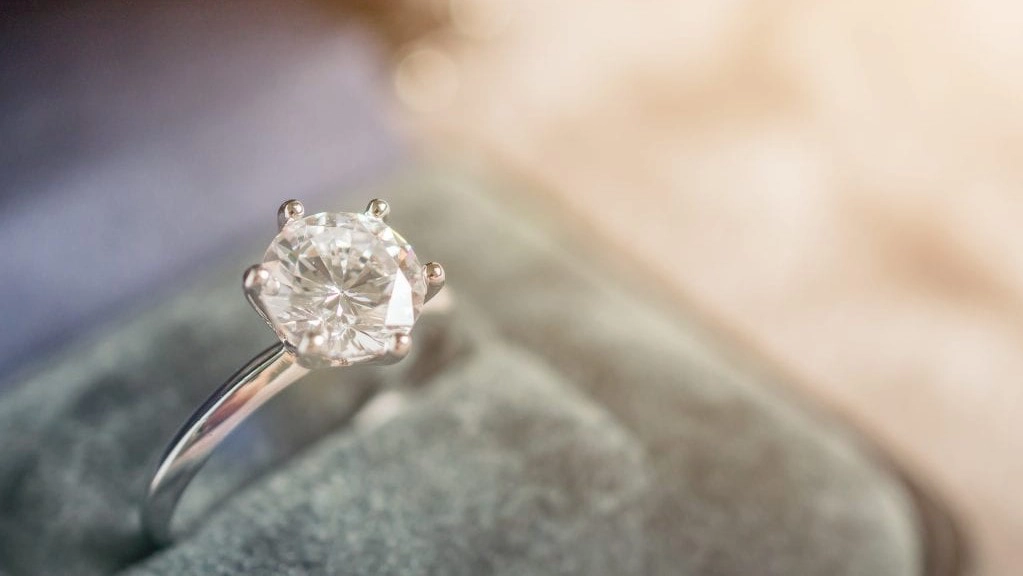
Conclusion
Support local. That is my most important thought. You still have to do a little homework to avoid the fly-by-nights. Fake reviews are easy enough to spot and nothing beats picking up the phone. The whole experience should be exciting and memorable.
People go about buying a 1ct diamond ring in the wrong way. It is like saying you want a quote for a car. a Red one. Rather work with a budget in mind. You will be able to get more accurate quotes. If you are afraid that people might take advantage of you, remember that you are now armed with new knowledge that will help you get a good deal.
Don’t be afraid! I have seen so many people that start to shiver when they need to hold or pick up a diamond. I know that it’s a lot of money, but guess what: Diamonds don’t break that easily. Try to ask the jeweller to put the stone in a tweezer clamp for you. You can then inspect the stone without worrying about dropping it.
If you need a comparative price or any help with a custom design, please give us a call at SJ Gems.
Thanks!
The price of a 1ct diamond ring
the price of a 1ct diamond ring
the price of a 1ct diamond ring
the price of a 1ct diamond ring
the price of a 1ct diamond ring

